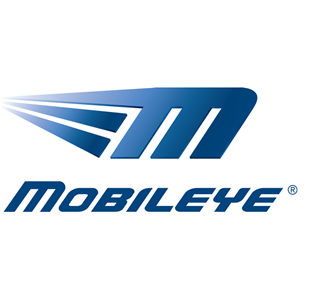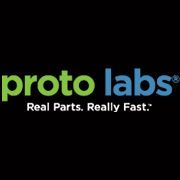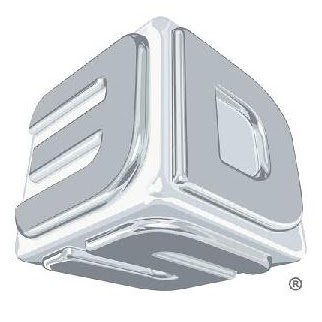Category: Manufacturing Technology Research
Protolabs: Doubling Down on Injection Molding & CNC Machining
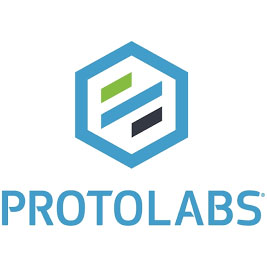 Rather than call out its core manufacturing services as legacy businesses, as the previous management team did in the past, Protolabs is doubling down on the value it can provide in each of its two key manufacturing services: injection molding (IM) and CNC machining. On the IM side, Protolabs is now offering seven-day turnaround time in for mold creation, down from 14 days previously. It has also vowed to compete more rigorously for business with longer lead times. This is in contrast to the past, when Protolabs focused almost exclusively on prototypes and part production runs with quick turnaround times. The company intends to use its internal factories primarily, as well as partners to optimally schedule part production.
Rather than call out its core manufacturing services as legacy businesses, as the previous management team did in the past, Protolabs is doubling down on the value it can provide in each of its two key manufacturing services: injection molding (IM) and CNC machining. On the IM side, Protolabs is now offering seven-day turnaround time in for mold creation, down from 14 days previously. It has also vowed to compete more rigorously for business with longer lead times. This is in contrast to the past, when Protolabs focused almost exclusively on prototypes and part production runs with quick turnaround times. The company intends to use its internal factories primarily, as well as partners to optimally schedule part production.
Similarly in CNC machining, formerly known as First Cut, the company has also achieved success with quick turnaround times, but will now be focused on longer lead time business, as well as leveraging its Hubs partner network to create more exotic parts that cannot be produced in house. The overwhelming majority of revenue from Hubs comes from partners with expertise in CNC machining, which enables Protolabs to offer customers a wider range of volume pricing, part tolerances, part complexity and finish options, such as nickel and black oxide plating. The new strategy also enables Protolabs to make a broader outreach to procurement and supply chain teams, in addition to its core community of product developers.
Another strategic shift for the company is more closely monitoring the profitability of each of its key segments, which include 3-D printing as well as sheet metal fabrication. 3-D printing, which contributes about 14 percent of revenue, is known to be less profitability than CNC machining and injection molding. The company operates several factories, and it is likely that the operations will be scrutinized more closely. Similarly sheet metal fabrication contributes less than five percent of revenue, and an undisclosed level of profitability.
A key advantage that Protolabs holds over digital brokers that claim to offer similar services, is that many companies prefer to deal directly with their manufacturing service provider, particularly for proprietary projects that require close manufacturing tolerances. The ability to visit Protolabs’ facilities and “kick the tires” is a key advantage for the company.
Amazon.com: Eyeing the Home Robot Market?
 According to what appears to be a credible article in last week’s Bloomberg Technology, Amazon.com is proceeding with plans to create a home robot, through a product development effort that has been code-named Vesta, as part of its Lab126 consumer device division, based in Sunnyvale, California. Lab126, led by Greg Zehr, a former head of R&D for Palm, a pioneer in mobile computing, is credited with the introduction of Kindle e-book reader, and is responsible for the Amazon Echo, FireTV set top boxes, and Fire tablets. It is unclear what purpose an Amazon.com home robot would serve, but in general terms the speculation is that Amazon.com is looking to build on the success of the Amazon Alexa assistant and Echo home speaker product line by creating a roaming version of Alexa, perhaps with the ability to conduct basic house chores.
According to what appears to be a credible article in last week’s Bloomberg Technology, Amazon.com is proceeding with plans to create a home robot, through a product development effort that has been code-named Vesta, as part of its Lab126 consumer device division, based in Sunnyvale, California. Lab126, led by Greg Zehr, a former head of R&D for Palm, a pioneer in mobile computing, is credited with the introduction of Kindle e-book reader, and is responsible for the Amazon Echo, FireTV set top boxes, and Fire tablets. It is unclear what purpose an Amazon.com home robot would serve, but in general terms the speculation is that Amazon.com is looking to build on the success of the Amazon Alexa assistant and Echo home speaker product line by creating a roaming version of Alexa, perhaps with the ability to conduct basic house chores.
The authors of the article indicate that prototypes have been built with advanced cameras, and that Max Paley, a former Apple executive, is working on computer vision technologies for a home robot. The Bloomberg article suggests that Amazon.com plans to “seed” robots in homes by the end of this year, and could potentially launch a commercial robot sometime in calendar 2019. The article also indicated that based on Amazon’s prototypes and tests, it may choose not to enter the market.
Is Amazon.com’s Entry Plausible?
Despite its failure in the smart phone market, Amazon.com has emerged as a prolific consumer electronics product company, having made a number of successful bets, most notably having created the e-book market with the Kindle, and more recently creating the market for smart home assistants, via Alex and Echo. Importantly, Amazon has had its greatest success in categories that it creates. In the Kindle e-reader category, Amazon used to have some competition from the Nook, but not much anymore. Google, which is looking to parlay its success with Google Assistant into the Google Home product line, is playing a severe game of catch up to Amazon.com, as the Echo device family holds a more than two-to-one market share advantage against the Google Home product. Alphabet recently merged its Nest division, which provides, smart thermostats, smoke detectors, webcams, and home alarm systems, into its Google hardware division, suggesting that the Google assistant will be more tightly integrated into Google’s smart home offerings.
At this point it remains unclear what Amazon.com’s product and delivery plans are for the smart home, beyond continued updates to the Echo device family. Amazon.com has a growing base of talented engineers, and proven expertise in addressing the smart home, through the success of Alexa and Echo. Amazon also owns its own robotics company as a result of the $750 million acquisition of Kiva Systems back in 2012. Kiva has been focused on robots for warehouse fulfillment operations, and it is unclear whether the robotic R&D efforts of Kiva, based on the East Coast, and Lab123, are linked.
Our sense is that Amazon.com has many of the pieces in pace to create some type of consumer robot. The question we have is how long it would take Amazon to commercialize a product, and what tasks it would perform. Another key question is whether Amazon.com will choose to enter the market at all, given the large number of other product opportunities that it has under consideration.
Mobileye: Behind the Delphi Automotive Partnership
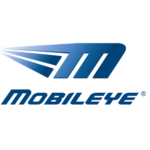 While much attention has been focused on Mobileye’s (NYSE: MBLY) decision to dissolve its OEM supplier relationship with Tesla Motors (NASDAQ: TSLA), a more important development in our opinion is Mobileye’s decision to work more closely with Delphi Automotive (NYSE: DLPH) on a new OEM solution focused on autonomous driving.
While much attention has been focused on Mobileye’s (NYSE: MBLY) decision to dissolve its OEM supplier relationship with Tesla Motors (NASDAQ: TSLA), a more important development in our opinion is Mobileye’s decision to work more closely with Delphi Automotive (NYSE: DLPH) on a new OEM solution focused on autonomous driving.
On August 23rd Mobileye announced a new partnership with Delphi Automotive PLC (Delphi hereafter), one of its largest Tier One customers, with whom it has been working for over ten years. The new arrangement envisions the creation of a turnkey autonomous driving package for the most advanced stages of driving automation. A major focus for Delphi is electronics and safety, a business segment through which it provides software, systems, and components for car passenger security, comfort and safety, including passive and active safety electronics, displays, and mechatronics. Delphi’s products for ADAS include technology provided by Mobileye, as well as a number of other suppliers, whose products range from radar, camera systems, and software, to sensors.
Like many of Mobileye’s Tier One customers, Delphi has been working on various initiatives relating to advanced driver assisted and driverless car features. A little more than a year ago, Delphi acquired Ottomatika, a Carnegie Mellon University spin-out, to enhance its active safety and automated driving capabilities. Delphi is now in the process of integrating Ottomatika’s automated driving software into its active safety systems to create a platform to make human-like decisions. Delphi also made an equity investment in Quanergy in order to develop low-cost, high performance solid state LiDAR products that will provide a complete vehicle perception solution for Level 3 and Level 4 automation applications for semiautonomous or driverless vehicles.
A key part of the agreement between Mobileye and Delphi calls for the companies to combine efforts on machine learning to create a new class of machine intelligence that mimics human driving, including ways for a driverless car to negotiate with other vehicles to merge into urban traffic, a key challenge for achieving real-world automated driving. Under the terms of the agreement, the two companies will work toward creating a full turn-key package for Level 4 and Level 5 automation by 2019. Beginning at the Consumer Electronics Show in January, the companies plan to demonstrate a prototype vehicle. Fleet testing is slated to begin in 2017.
Even though Delphi is a Mobileye customer, Delphi’s R&D projects raised the suspicion in our minds that the companies might compete against one another in the future. However, the new partnership makes clear that the two will be coordinating their efforts for a number of reasons, not the least of which is a common competitive threat, as each company seeks to blunt the impact of Continental AG and Robert Bosch Group, two German-based Tier One automotive suppliers, both of whom have ambitious driver assisted technology initiatives underway. Since Bosch, Continental, and Delphi each work with all of the largest 25 global car makers, much is at stake. Mobileye has the ability to help Delphi create a truly differentiated driverless car product, and in doing so, will strengthen one of its key alliances.
Proto Labs: Growing Pains Begin
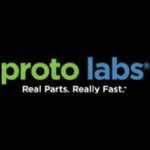 With trailing twelve month sales of $289 million, and a market cap of roughly $1.6 billion, Proto Labs, based in Maple Plain Minnesota, is the largest provider of quick turn manufacturing services, with offerings for plastic and metal-machined parts. Through the use of patented technology for plastic injection molding and CNC machining, as well as an advanced web-based ordering system, PRLB is an outsourced partner to its more than 8,000 customers, who seek help in creating prototypes as well as production runs of up to 10,000 parts. In addition, PRLB has acquired a couple of companies that provide 3D printed part services, which collectively account for about 13 percent of sales.
With trailing twelve month sales of $289 million, and a market cap of roughly $1.6 billion, Proto Labs, based in Maple Plain Minnesota, is the largest provider of quick turn manufacturing services, with offerings for plastic and metal-machined parts. Through the use of patented technology for plastic injection molding and CNC machining, as well as an advanced web-based ordering system, PRLB is an outsourced partner to its more than 8,000 customers, who seek help in creating prototypes as well as production runs of up to 10,000 parts. In addition, PRLB has acquired a couple of companies that provide 3D printed part services, which collectively account for about 13 percent of sales.
Proto Labs provides customers with the crucial benefits of faster time to market, improved product quality, and the ability to quickly customize low volume production runs. With seven manufacturing facilities around the world, Proto Labs derives less than 25 percent of its revenue from overseas operations. The company’s customers include manufacturers and designers of medical devices, cars, aerospace, defense, and aviation products, as well as consumer electronics, and industrial machinery. Each quarter, Proto Labs conducts a high level of repeat business within its customer base, typically around 80 percent. Importantly, no customer accounted for more than two percent of sales in 2015.
Large industrial manufacturers have been reluctant in the past, for a variety of reasons, to outsource prototyping and production. The reasons relate to the desire to maintain captive production of prototypes and custom parts, and the preference to keep low volume manufacturing in house. However, the trend toward mass customization, in which consumers desire near custom-built products in smaller quantities with fast turnaround times is at odds with the core competency of many manufacturers who are unable to achieve the desired unit costs that come with low volume production. Outsourcing production also allows companies to concentrate on other core competencies, such as product design, marketing, distribution, and customer service.
However, recent challenges attendant to soft demand in the industrial machinery vertical, as well as challenges in integrating the Alphaform 3D printed parts service will weigh on sales growth and margin expansion.
Proto Labs: Recent Developments
Soft Demand in North America
Proto Labs’ Q2 revenue of $75 million grew by 17 percent over the prior, including the results of Alphaform, a 3-D printing operation which was acquired last year, and contributed nearly $5 million in revenue in Q2. US revenue, which accounts for 74 percent of sales, grew by just six percent versus the prior year, the slowest rate in a couple of years. Despite the fact that no single customer accounts for more than two percent of sales, Proto Labs is seeing weakness in its top 20 accounts, and cited industrial and commercial equipment as particularly soft verticals in the quarter. Importantly, plastic, rubber and die cast injection molders and machine shops, who normally outsource prototypes and low volume production runs to Proto Labs, are now doing more in-house manufacturing of these parts and prototypes, due to their own excess capacity.
Proto Labs is also seeing project delays. CNC Machining operations, which normally account for about a quarter of quarterly sales, were relatively weak, rising by just seven percent over the prior year. Bright spots during the quarter include relatively strong performance from both Europe and Japan, which account for 23 percent, and three percent of sales, respectively. Europe, excluding the contribution from Alphaform, grew by 24 percent, and Japan grew by 46 percent.
Despite a soft quarter, Proto Labs’ quality of reporting remains consistently strong. During the second quarter PRLB generated $20 million in cash from operations and allocated $14.1 million to capital expenditures, of which $8 million were for facilities, as the company is adding capacity in North Carolina, and in Japan. As a result, cash on the balance sheet increased by $7 million on a sequential basis.
Alphaform Impact
Alphaform, a German-based 3D printing operation acquired at the end of 2015, remains an integral part of Proto Labs’ strategy to accelerate its European operations in the 3D printed parts services business. 3D printing contributed $9.1 million in revenue in Q2, flat with the preceding quarter, and up 67 percent versus the prior year. However, the growth was almost entirely due to the addition of Alphaform last year. When excluding the $4.8 million contribution from Alphaform, 3-D printer revenue growth was nominal.
Alphaform diluted the company’s gross margin by 310 basis points, a pattern which has been the case since the company was acquired. The lingering impact of certain Alphaform contracts with lower gross margins, as well as several niche businesses such as metal and magnesium injection molding, which are in the process of being discontinued by Proto Labs, contributed to relatively weak margins in the quarter.
Sales Management Disruption
Back in April of 2016, Proto Labs disclosed that its VP of global sales had resigned. Since then, the company has been hiring new sales managers, in an effort to reduce the ratio of sales managers to sales people. Proto Labs has also engaged a consulting firm to examine its sales processes and recommend new ones, pending their conclusions. The company is also in the process of hiring a new chief revenue officer, which it expects to do by the end of the calendar year.
Prognosis
Despite the above-mentioned growth pains, overall, we see Proto Labs as among the best positioned manufacturing technology companies. Proto Labs maintains a strong balance sheet, with total cash and securities of $164 million, or $6.18 in cash per share, and no debt. The company maintains a conservative current ratio of 6.3, and accounts receivable DSOs were a modest 41 days at the end of the quarter, up by just a day versus the prior year. Return on equity was 15 percent on a trailing twelve month basis, consistent with prior periods. Importantly, Proto Labs has done nothing to stretch its quarterly performance, and maintains a high quality of reporting integrity. The company’s expertise in manufacturing materials and production should continue to position it well for the long term.
3D Systems: Can New Management Turn the Tide?
On April 4, 2016, following a six month search, the board of directors of 3D Systems (3DS hereafter) appointed Vyomesh Joshi, aka VJ, as president and CEO. The appointment occurred as the venerable manufacturer of 3D printers attempts to regain its footing, following an extended period of questionable acquisitions, loss of market focus, and damaged credibility among investors.
Joshi, aged 62, had been president of the Imaging and Printing Group of Hewlett Packard for 11 years, beginning in February 2001, and left as EVP in March of 2012, bringing to a close a 31-year career at HP, after HP, in one of its many reorganizations in the last number of years, combined printers and personal computers into the same business unit. While leading the $26 billion H-P printer business, Joshi doubled the division’s operating profit. Joshi appears to have been lured out of near-retirement with a stock and options package worth a potential $27 million, based in large part on 3DS’ future stock performance. Joshi is currently on the board of directors of both Wipro (NYSE: WIT) and Harris Corporation (NYSE: HRS). He received his bachelor’s degree in engineering from L.D. College in Ahmedabad, India, and a master’s degree in electrical engineering from the Ohio State University.
Joshi replaces 3D Systems’ highly flamboyant and acquisitive CEO Avi Reichental. Over the last few years 3DS has endured numerous set-backs, including an over-emphasis on acquisitions for growth, missteps in the consumer printer market, distribution channel challenges, product quality issues, a delay in the filing of its 2015 10-K, along with a lack of investor confidence, which has resulted in a more than 80 percent contraction in its share price since peaking at $97.25 in late 2013.
Since taking the helm at 3DS Joshi has been somewhat coy regarding future plans, but has noted the company’s lack of operational efficiency, and the challenge to build a sustainable corporate culture from among the company’s employee base of roughly 2,500, many of whom have come to 3DS via acquisition. In mid-June 3DS announced it had hired John N. McMullen, age 58, as VP Finance and CFO, replacing David Styka. McMullen had most recently been at Eastman Kodak, where he took the helm as CFO beginning in June of 2014. Prior to that, McMullen, was SVP Finance and Corporate Treasurer, as well as CFO of HP’s Imaging and Printing Group, where he worked alongside 3DS’ new CEO, Joshi.
The new management team will have much to confront, including helping customers sift through the reality versus the hype of 3D printing, along with the need to create printers with faster speeds and more precision to produce parts that can be used in volume production, in addition to prototypes utilized for visualization and marketing purposes. 3DS has, along with many of its competitors, from time to time over the last three years, produced printers with varying levels of product quality.
With regard to Joshi’s future strategy, we can gain a glimpse into his thinking. In an address before the Net Impact Conference at Stanford in November of 2005, Joshi spoke of the elements required to create a sustainable business. These include: identifying holes in the market, developing appropriate price models, establishing business partnerships, fostering trust and respect among employees, and providing leadership that puts business first, people second, and the egos of managers third.
Brooks Automation: Poised for Recovery?
 Is Brooks Automation poised to Participate in Industry Upswing?
Is Brooks Automation poised to Participate in Industry Upswing?
With trailing 12 month sales of $546 million, and a market cap of $680 million, Brooks Automation (NASDAQ: BRKS), based in Chelmsford Massachusetts, is a leading provider of automation equipment and services to the semiconductor, LED, and consumer electronics industries, which collectively account for 80 percent of sales. Life sciences accounts for the remainder, and is comprised of biological sample storage systems, consumables, and services, which leverage Brooks’ core competence in cryogenic and automated manufacturing equipment.
The cyclical semiconductor business remains Brooks’ largest and most profitable segment, where it serves over 200 OEM customers, including Applied Materials (NASDAQ: AMAT), Tokyo Electron (OTC: TOELY), Lam Research (NASDAQ: LRCX), and KLA-Tencor (NASDAQ: KLAC), who are in the midst of merger discussions. Brooks also conducts business directly with many of the leading semiconductor device makers, including Samsung, Toshiba, Intel (NASDAQ: INTC), Taiwan Semiconductor Manufacturing Company (NYSE: TSMC), and Micron (NASDAQ: MU). Over the last several months, Brooks has begun to see growing demand for its vacuum robots, and contamination and control solutions, which comprise about 40 percent of semi cap equipment sales.
Four years ago Brooks embarked on a strategy to divest non-core businesses, expand in the semiconductor equipment business, and diversify into life sciences, primarily through acquisition. Brooks Life Sciences parlays the company’s core competencies in cryogenics and automation into the cold storage, retrieval, and tagging of biological samples. Brooks has acquired five companies in the last four years, and the division now claims over 100 customers, including the top 20 drug and biotech companies.
The all-cash $128 million acquisition of privately-held, BioStorage Technologies, an Indiana-based provider of sample management services, was completed late last year. The business is on track to generate over $40 million revenue, and in doing so, has enabled the life sciences segment to achieve a $100 million annualized run rate, with services and consumables accounting for about 60 percent of the total. Though not yet profitable, Brooks Automation narrowed the operating loss in the segment to $2 million in the March 31 quarter, and with a recent restructuring, targets profitability by the end of the September quarter.
Three key swing factors will determine Brooks Automation’s fate over the coming year, specifically whether it:
- participates in the steady recovery of spending in the semiconductor industry, fueled by a resurgence in demand for front-end systems as OEMs and semiconductor customers shift their emphasis to 10 nanometer process technologies.
- achieves profitability in the Life Science segment through greater efficiency, execution, and a more predictable mix of consumables and services for cold storage samples.
- achieves operating margin expansion more broadly, as it concludes a number of cost reduction initiatives, and begins, at long last, to focus on organic, rather than acquisition-driven growth.
As Brooks confronts the above-mentioned challenges, the company provides investors with a degree of downside protection, given its historically strong free cash flow generation, a good balance sheet, with $68 million in cash, or $1.00 per share, no debt, a tangible book value of $3.61 per share, and a compelling valuation vis-à-vis its SMID cap peers in the semiconductor capital equipment business. The company also investors with a dividend, whose current yield is four percent.
iRobot: Leading the Revolution in Consumer Robots
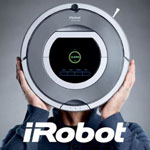 iRobot is the dominant provider of home vacuum robots, with an estimated market share exceeding 60 percent around the globe. Since the Roomba began shipping in 2002, iRobot has sold over nine million units, and the category continues to grow, as evidenced by the company’s 15 percent growth rate in consumer robots in the second quarter. The Roomba product line features six models, which range in price (at retail) from $300 to $700. The product features a range of cleaning capabilities, and is sold through a broad range of home retailers, including the most prominent ones in the US. Our recent review of a prominent ecommerce website indicated that iRobot recently held seven of the top eight slots for home robots.
iRobot is the dominant provider of home vacuum robots, with an estimated market share exceeding 60 percent around the globe. Since the Roomba began shipping in 2002, iRobot has sold over nine million units, and the category continues to grow, as evidenced by the company’s 15 percent growth rate in consumer robots in the second quarter. The Roomba product line features six models, which range in price (at retail) from $300 to $700. The product features a range of cleaning capabilities, and is sold through a broad range of home retailers, including the most prominent ones in the US. Our recent review of a prominent ecommerce website indicated that iRobot recently held seven of the top eight slots for home robots.
The Roomba 880, the most recent addition to the home vacuum robot product line, is priced at retail for $700 and demonstrates iRobot’s technology leadership. Utilizing revolutionary aeroforce extractors, essentially “bristleless” brushes, the product removes up to 50 percent more dust, dirt, hair and debris, and has 5x more power than previous Roomba models. The Roomba 880 is the company’s fastest selling vacuum robot model, accounts for more than 25 percent of sales—despite its higher price point relative to other Roomba models—and features higher gross margins than other models.
The Roomba accounts for an estimated 90 percent of iRobot’s consumer product sales. iRobot also sells robots for floor mopping and floor scrubbing. Floor mopping robots, acquired via Mint a couple of years ago, have since been re-branded as the Braava product line. Although these models have generally not been as successful as the Roomba, they are growing. Other home robots include the Looj gutter cleaning robot, and Mirra pool cleaning robot.
Defense and Security Robots May Present New Opportunities
For the first ten years of its corporate history, iRobot focused primarily on robots for defense and security missions, including the PackBot, a tactical mobile robot which rescue workers deployed at the World Trade Center following the September 11, 2001 terrorist attacks. The following year PackBot was deployed with US troops in Afghanistan. In 2004, IRBT began development of a small unmanned ground vehicle, dubbed the SUGV, which has been used in US combat missions in Iraq and Afghanistan. As recently as 2011, defense and security robots accounted for 40 percent of the company’s revenue.
iRobot continues to see lackluster growth in this sector, though visibility appears to be improving. We are forecasting that D&S will contribute roughly seven percent of sales for 2014. Sales to the US DoD account for about half of the D&S business, and other markets include the sale of defense and first responder robots to Canadian, European, Latin American, and Asian governments. Disaster recovery is an important market opportunity, and, as we understand it, the company’s robots are still being used in Japan for post recovery cleanup of its nuclear reactor disaster.
Remote Presence Robots on the Horizon
iRobot is in the earliest stages of pioneering a new market for remote presence robots. Applications have been developed for telemedicine and team collaboration. iRobot’s RP-VITA allows physicians to diagnose patients from remote locations. The product is sold by InTouch Health. The Ava 500 video collaboration market is sold through Cisco Systems’ (NASDAQ: CSCO) reseller channel. Early use cases for the Ava 500 include enterprise team collaboration, where the robot can follow team members from room to room, rather than remaining stationary in a conference room. Other uses include customer briefing centers, clean rooms, corporate training, and manufacturing, for remote shop floor inspection. The new robots appear to be at least a year away from significant customer adoption, though the technology holds much promise for consumer applications.
Competition
iRobot continues to dominate the $250 plus market for consumer robots, through its Roomba, Braava and Mint product lines. We believe this is the largest segment for home robots based on our review of ecommerce data. iRobot has little competition in this market in the US, save for Neato, a privately-held company. Elsewhere, the company faces indigenous competitors, such as Dirt Devil’s Free Time hard floor robot vacuum cleaner in the UK. This robot retails for the equivalent of roughly $130, providing competition at the low end of the market.
About a month ago, Dyson, the large UK based manufacturer of premium upright vacuum cleaners, hand dryers, heaters, and bladeless fans, announced its 360 Eye, its first ever robot vacuum cleaner. The product, which is to be released in Japan in the first quarter of 2015, with no time table yet stated for Europe or the US, is a vision-based robot equipped with a camera, and operates on a lithium ion battery with an unknown charge time. The product allows for remote scheduling via iPhones and Android devices, and will be priced at the retail equivalent of about $1,000 US.
The 360 Eye is evidently the result of a multi-year, multi-million dollar investment by Dyson, a company which had, at one time, been dismissive of the opportunity for home robots. Our view is that the product will no doubt provide iRobot with competition in Japan, which accounts for 20 percent of iRobot’s sales in any given quarter.
Dyson’s 360 Eye will sell at a 25 percent price premium to iRobot’s highest priced robot, and is well more than twice the price of many of iRobot’s models. It remains unclear when the product will reach the US and Europe, though we are sure Dyson has plans to enter these markets. At this time it is unclear whether Dyson has violated any of iRobot’s 300 overseas patents, which do not expire, according to our understanding until at least 2021. iRobot’s models allow for scheduling at various intervals during the day, though it does not yet offer remote scheduling via mobile devices. While it remains unclear whether Dyson’s cyclone suction technology or iRobot’s revolutionary aeroforce extractors will win the day, we expect a spirited battle.
Conclusion
iRobotcontinues to see solid growth from its Roomba line of home vacuum robots, in which it holds a dominant market share. A new version of the Roomba combined with other new and recently introduced home robots underscore the progress the company is making to expand its global footprint. Other consumer robots already on the market and presumably roaming around in its R&D labs also carry potential. The company’s defense and security business remains soft, though it has been down-sized to a near break-even level, and will contribute less than 10 percent of sales. It may yet stage a rebound, which would give the Bedford Massachusetts robotics pioneer two solid legs on which to stand.
Proto Labs: Responding to Customers or Competitors?
 Founded in 1999 and headquartered in Maple Plain, Minnesota, Proto Labs (NYSE: PRLB) is a leading provider of quick-turn custom-manufactured parts. Along with companies that make 3D printers, Proto Labs has helped to spark a renaissance in American manufacturing. With an emphasis on CNC machining and plastic injection molding operations, bolstered by an easy-to-use online platform, Proto Labs delivers custom parts with fast turn around times to customers that need prototypes or limited production runs of key products. Turn around times can range from one to 10 business days, depending on the complexity of the part and the quantity ordered.
Founded in 1999 and headquartered in Maple Plain, Minnesota, Proto Labs (NYSE: PRLB) is a leading provider of quick-turn custom-manufactured parts. Along with companies that make 3D printers, Proto Labs has helped to spark a renaissance in American manufacturing. With an emphasis on CNC machining and plastic injection molding operations, bolstered by an easy-to-use online platform, Proto Labs delivers custom parts with fast turn around times to customers that need prototypes or limited production runs of key products. Turn around times can range from one to 10 business days, depending on the complexity of the part and the quantity ordered.
Proto Labs has become a trusted supplier to its customers, which include manufacturers of medical devices, cars, aerospace, defense, and aviation products, industrial machinery, and consumer products, including electronics. Proto Labs registered a five-year compound annual growth rate of over 25 percent through the end of 2013.
The rapidly falling prices and enhanced capabilities of 3D printers threaten, to some extent, longer term demand for outsourced, quick-turn manufacturing and rapid prototyping services, since customers can make more prototypes in house. And while Proto Labs’ services were once distinct from the prototyping services of Stratasys and 3D Systems, the use case for various services has become blurred. Furthermore, Stratasys and 3D Systems are taking their services businesses more seriously than in the past, as both growth and profit engines.
As a result Proto Labs has abandoned a service positioning exclusively focused on CNC machining and plastic injection molding, and now offers 3D printer prototyping services for both prototypes and limited production runs. Thus, Proto Labs has responded to both customer requests for 3D part production, as well as the increased emphasis that its competition has placed on quick-turn services.
Our view is that Proto Labs continues to serve a large, healthy growing market, but that competitive developments will need to be monitored. Overall we see Proto Labs as a well managed company, with a strong margin profile currently. We see growth ahead for the Minnesota company, though we believe its valuation is fairly rich at this point (roughly 35x fully-taxed 2015 EPS, and 10x 2014 EV/Sales) and may not fully reflect the impact of increased competition.


